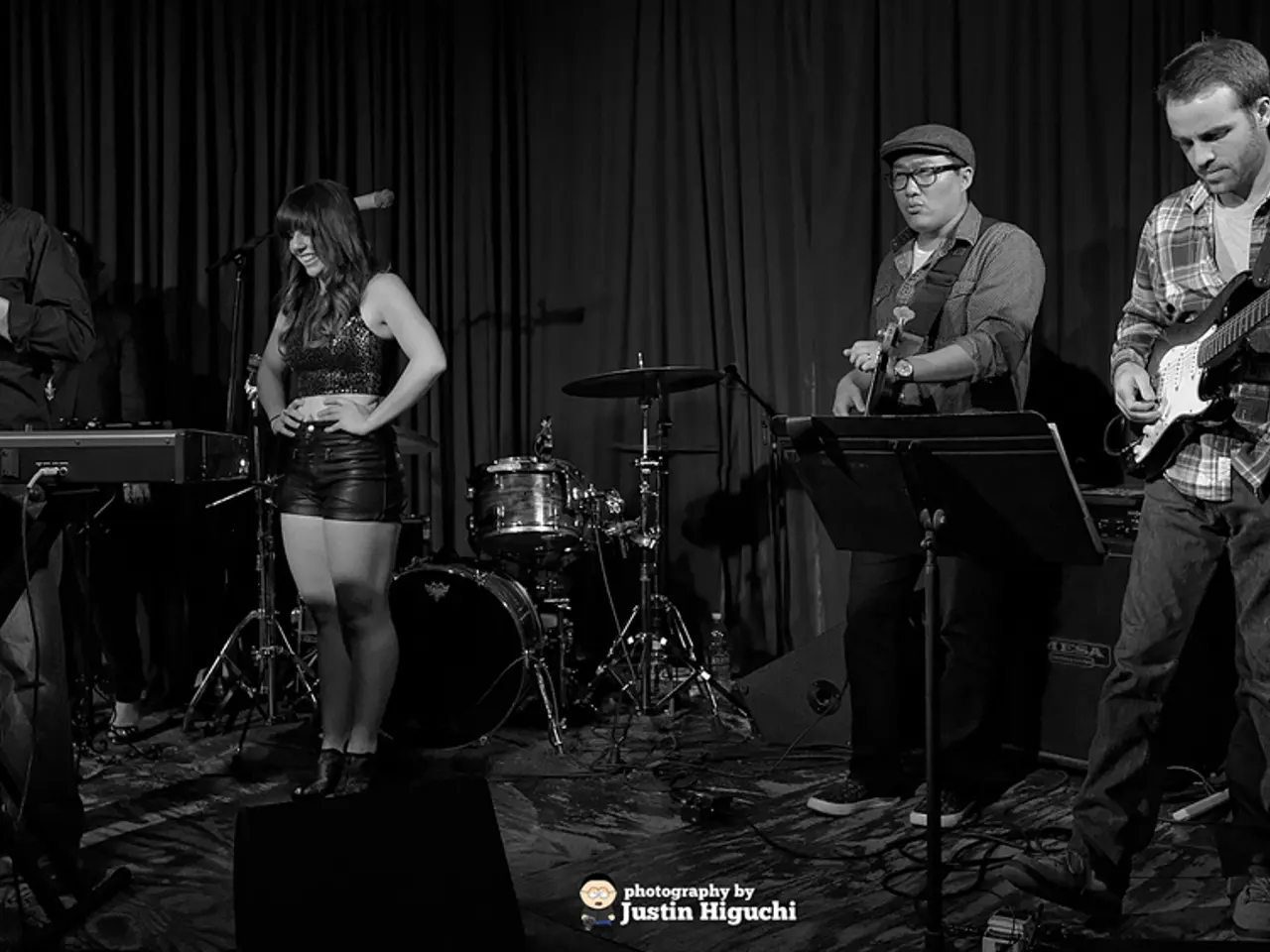Difference in Sound Reflection: Reverb vs. Echo
In the realm of audio production, two powerful tools often used to shape soundscapes are echo and reverb. These effects, while similar in concept, serve distinct purposes and can greatly enhance the quality and emotional impact of music and recordings.
Echo, a familiar phenomenon in everyday life, is used in audio production to add depth and texture to tracks. It creates a distinct, clear repetition of sound, often heard as a "Hello...hello...hello" effect. In music, echo is used to add dimension and rhythmic patterns, emphasizing certain elements and creating a unique sonic landscape.
On the other hand, reverb is a continuous reflection of sound that adds fullness and natural ambience. Unlike echo, reverb does not produce discernible repeats but a sense of spaciousness and depth, simulating acoustic environments ranging from small rooms to vast halls. Proper use of echo and reverb enhances audio environments, making vocals and instruments sound more natural, lively, or immersive.
The main differences between echo and reverb lie in their application, time-based reflection behavior, and sound characteristics. Echo involves discrete reflection delays with noticeable gaps, while reverb consists of many reflections arriving quickly and continuously, creating a decay (tail) that gradually diminishes the sound over time. Echo effects are rhythmic and can add a repetitive texture or emphasis, while reverb adds fullness and natural ambience without distinct repeats.
In music production, reverb is essential for adding depth and emotion, helping blend instruments and vocals. Achieving the right acoustics is crucial for quality sound production. By utilizing different reverbs, sound engineers can tailor the sound, enhancing the listener's experience.
During mixing, the challenge is to layer sounds without overshadowing the main elements. Acoustical foam is used to minimize unwanted echoes, and a sound mixer is employed to adjust the levels of reverb to make vocals clear while still adding depth to the background.
In mastering, the focus shifts to the overall cohesion of the track. Echo settings are adjusted to ensure they contribute to the audio's warmth without causing muddiness. Various types of reverb create different atmospheres, such as hall reverb, plate reverb, and spring reverb, empowering sound engineers to enhance emotional and spatial elements in their work.
Both echo and reverb are essential in sound engineering and audio production. Sound engineers use these effects distinctively to enhance audio environments, with echo often used for creating rhythmic patterns and delay effects and reverb for creating ambient textures and simulating various acoustic spaces.
By understanding the role of reflections, we can manipulate these effects in audio recordings and live performances, creating captivating soundscapes that engage and captivate listeners. Whether it's the echo of a distant drum or the reverb of a grand hall, these tools allow us to shape sound in ways that were once thought impossible.
- In music production, the use of echo effect adds depth and rhythmic patterns to tracks, emphasizing certain elements and creating unique sonic landscapes.
- Reverb, contrastingly, adds fullness and natural ambience to recordings, simulating acoustic environments and enhancing the blend of vocals and instruments.
- During mixing, sound engineers minimize unwanted echoes using acoustical foam and adjust reverb levels to make vocals clear while adding depth to the background.
- In mastering, the echo settings are adjusted to ensure they contribute to the audio's warmth without causing muddiness, while various types of reverb create different atmospheres, such as hall reverb, plate reverb, and spring reverb.
- These gadgets and technology in the realm of music production, like mixing consoles, audio interfaces, and software plugins, wield powerful potential in shaping captivating soundscapes.




